Hundreds of wild species have proven to glow in the dark.
Pretty incredible party trick, right? But how in the heck do they do it? And why?
Biofluorescence
First, we’ll meet the critters that use biofluorescence to help them glow. Biofluorescence occurs when animals soak up the sun and all that light alters into a colour – often orange, red or even green.
Puffins
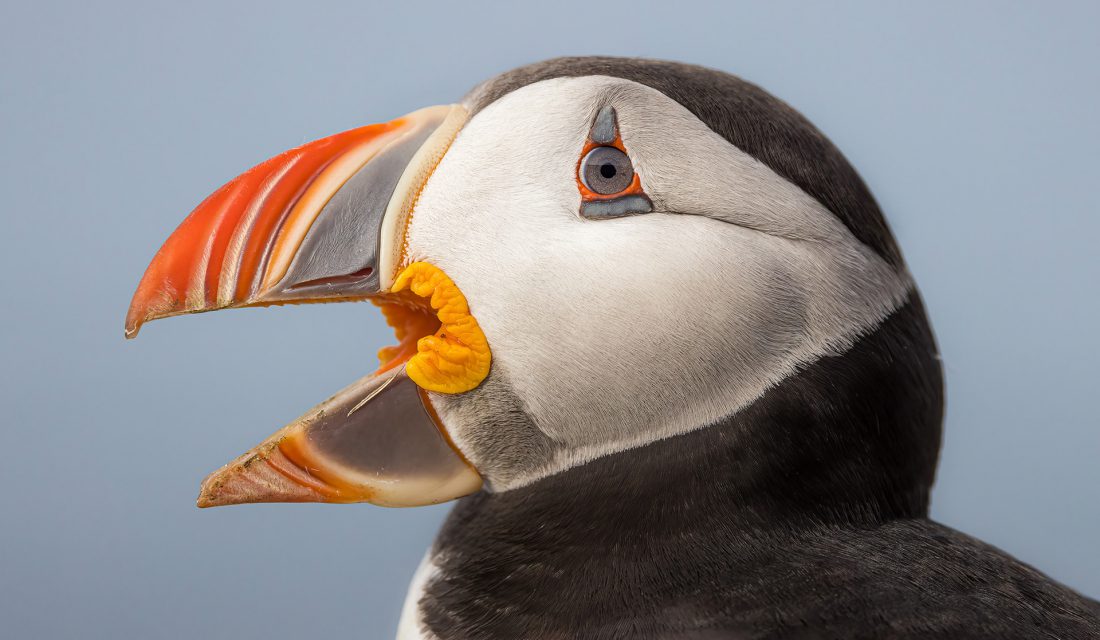
A University of Nottingham research student, Jamie Dunning, was the first to discover that the Atlantic Puffin’s beak glow. The truth is he’d heard that a relative of the Atlantic Puffin, the Crested Auklet, has feathers that glow. It wasn’t long before he needed to satisfy his curiosity and check to see if any body parts on the Atlantic Puffin also glowed. It turns out Atlantic Puffins’ beaks glow orange! Thus far, researchers believe their glowing beaks help them attract mates. The first clue? Their beaks only glow orange during the summer months (also their breeding season!). Secondly, Atlantic Puffins show affection to their potential mates by billing, namely using their beaks to offer affection. Before you rush off to see a puffin colony at night hoping to see a sea of glowing beaks, hold your horses. The human eye can’t see it. We can only observe the glow under UV light which we can’t see with the naked eye (we need a little help from technology to witness it). Conveniently enough, puffins don’t have this problem as they’re able to see UV light!
Flying Squirrels
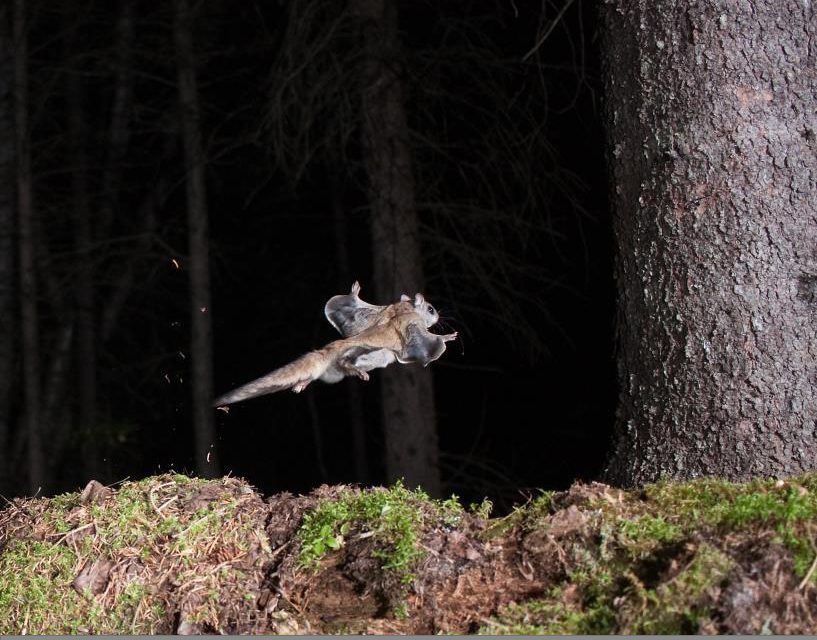
Did you know that nocturnal flying squirrels glow bright pink? John Martin, a biologist based out of Wisconsin was shocked when he shone his UV flashlight outside and saw a bright pink gliding squirrel. It turns out that the nocturnal species of flying squirrels all don the same pink shapes on the flaps of skin that help them glide. Interestingly enough, the diurnal species didn’t glow, causing researchers to believe that nocturnal animals are more likely to glow! As we mentioned before, humans can’t see UV light (that’s why John as only able to see the glow with his UV flashlight). But what about nocturnal flying squirrels? Can they see UV light? Researchers don’t know yet. One hypothesis is that their glow might have something to do with their diet. You see, flying squirrels eat a lot of insects, most of which, you guessed it, can see UV light. Could they be attracting a late night snack with their pink glow?
Bioluminescence

For more glowing critters, we’ll have to venture deep into the ocean. A study published in Scientific Reports found that a whopping 75 per cent of marine animals glow in the dark. That glow is thanks to bioluminescence which creates light from a chemical reaction deep within the bodies of these animals and plants.
Anglerfish

Since Anglerfish live deep in the ocean – the bathypelagic zone – they’re awfully difficult to see thanks to just how deep they live – the sun never reaches this depth. Luckily for mature female Anglerfish, they produce an incredible bacteria (called Photobacterium) that gives off light in a pouch on their dorsal fins. Researchers are still not sure how they come across the bacteria that makes them glow. No matter how they come across the special stuff, it comes in mighty handy when they’re looking for dinner! You see, at this depth with no light coming from the sun, any light is attractive. And so small fish easily fall into the jaws of anglerfish as they attracted to the glow. Young anglerfish and male anglerfish have to find other ways of finding prey since their bodies don’t glow!
Krill
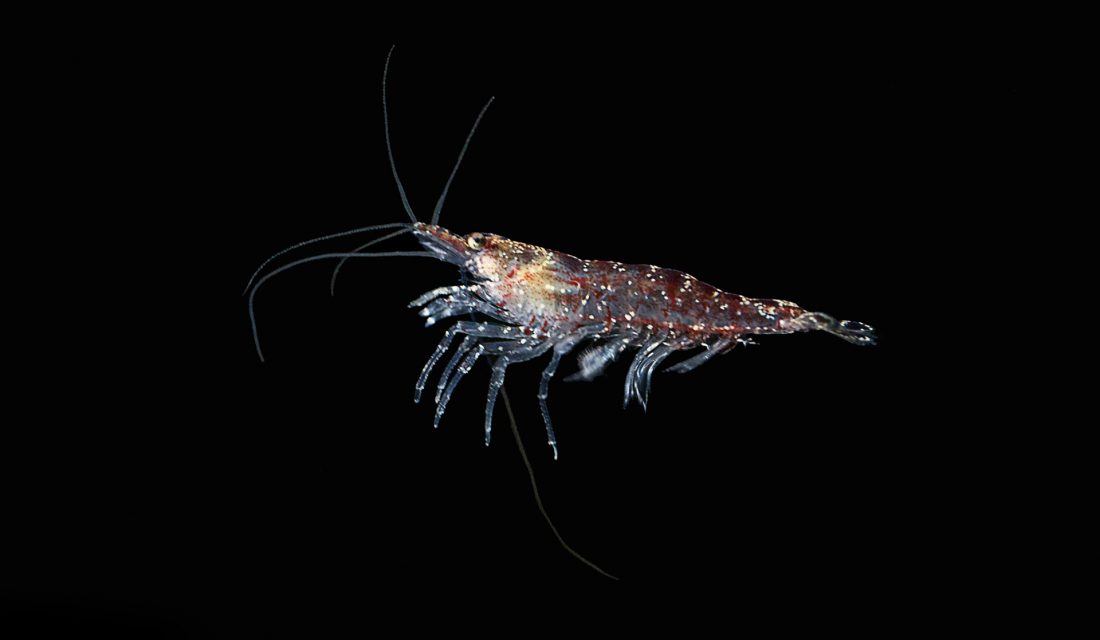
Some of our favourite baleen whales, like Blue Whales, eat krill for breakfast, lunch and dinner. In fact, studies show they eat between five and 30 per cent of their body weight in krill every single day! These tiny crustaceans have proven critical to the survival of these whales time and time again. But they’re pretty neat in their own right too! Krill light up. They have several organs that create this light. Researchers are still trying to find out why. Some believe they might light up to communicate with one another, while others believe they might be trying to hide away from predators by blending in with their surroundings.
Jellyfish
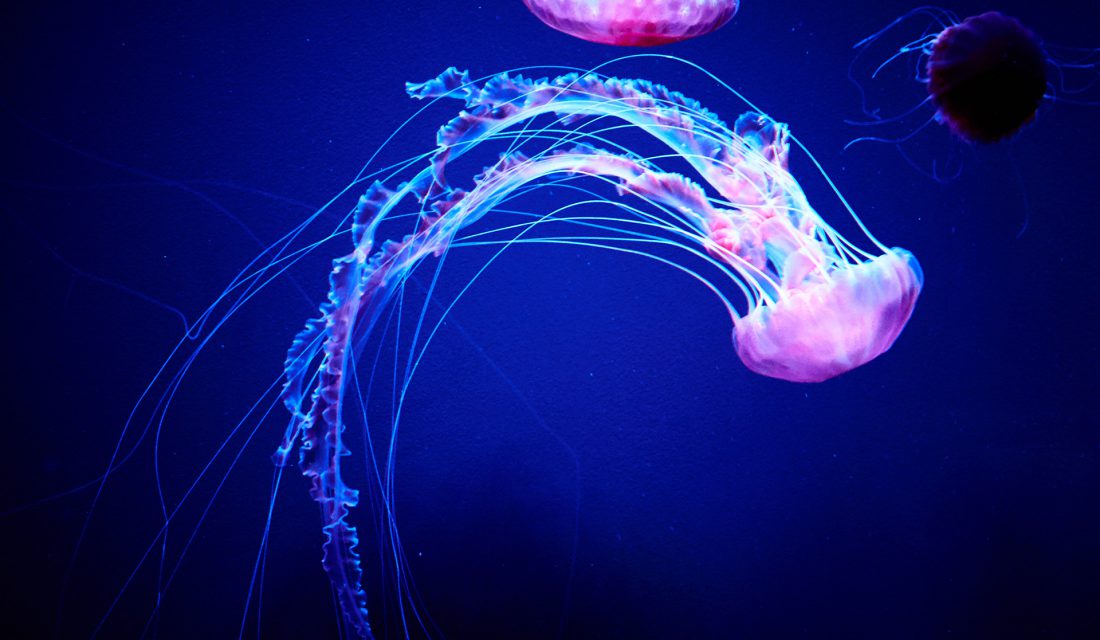
Did you know that approximately half of the jellyfish in the world glow? It comes in rather handy when you’re trying to escape predators! Some jellyfish will use a glowing tentacle to confuse a predator. Others will shoot thousands of glowing fragments through the water to distract a predator. Others still, like Comb jellyfish, create bright bursts of light that surprise predators and gives them a chance to get away!
Jellyfish produce this light by eating plenty of small bioluminescent crustaceans. Also…they haven’t always glowed. While jellyfish have swam through our waters for millions of years, they only began to glow in more recent years when they discovered that eating these glowing crustaceans and thereby glowing themselves can have some serious perks – and might even be a major key to keeping the species alive.



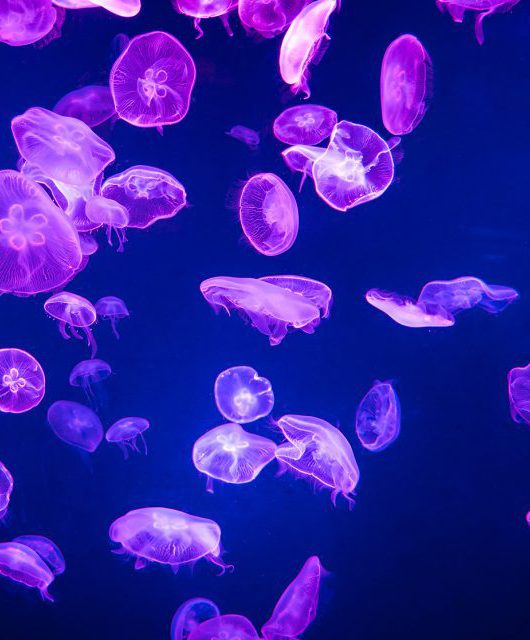
1 comment
There has not been an article you have posted that I not find interesting/ oft times fascinating.
Look forward to more great stuff.